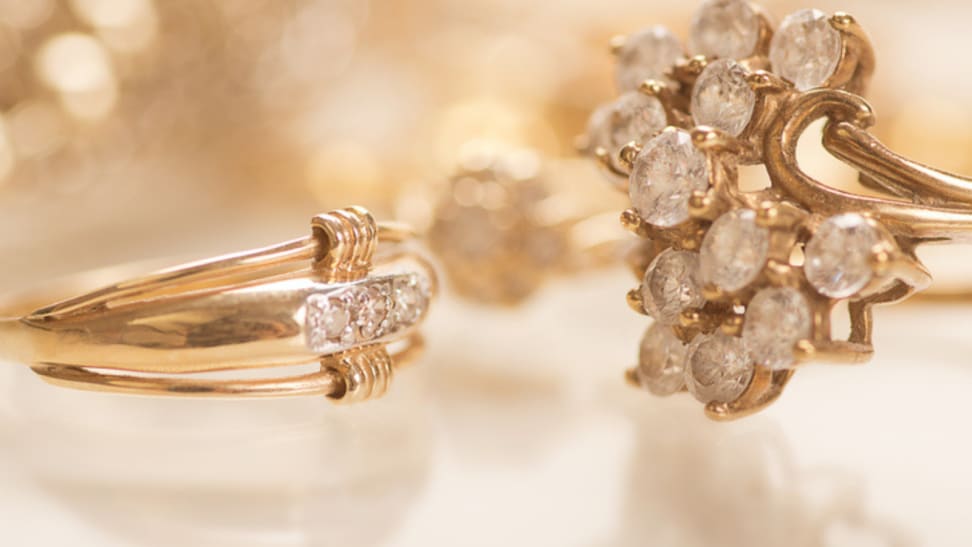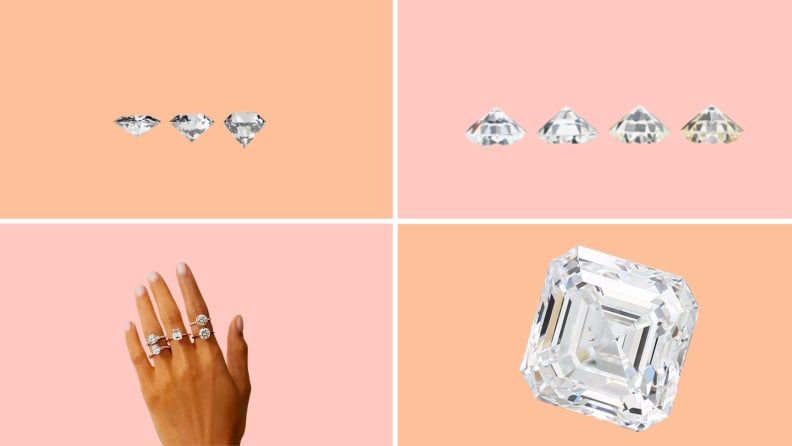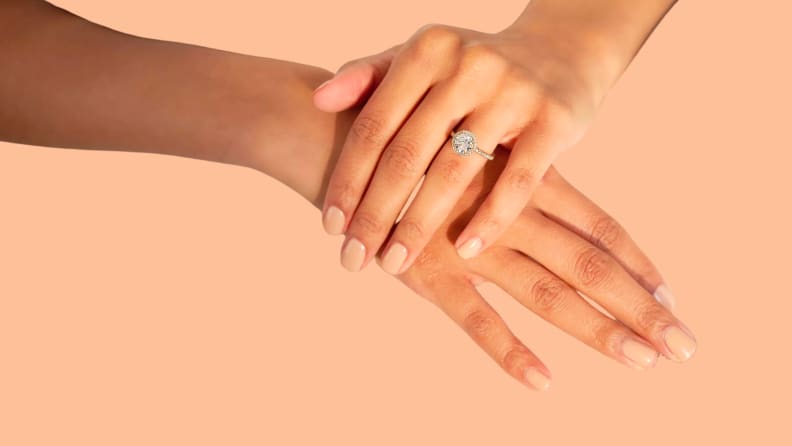A complete beginner’s guide to buying diamonds
How to shop for the perfect diamond engagement ring
 Credit:
Faferek/Getty Images
Credit:
Faferek/Getty Images
Recommendations are independently chosen by Reviewed's editors. Purchases made through the links below may earn us and our publishing partners a commission. Prices were accurate at the time this article was published but may change over time.
Whether you’re looking for the perfect engagement ring, wedding ring, or a sweet gift for the upcoming holiday season, a diamond ring is probably your first choice. Most of us don’t buy diamonds as a hobby, but only for very rare and special occasions that call for high-end jewelry shopping. However, you might not know what to look for in a diamond that will make it worth the cost.
Buying a diamond isn’t as simple as walking in and asking for a diamond ring; there are a few things to keep in mind when making this big purchase. Otherwise, you may end up paying more for something that isn’t worth it.
Whether you’re buying for yourself or for a significant other, we made a simple guide with everything you need to know.
What do I need to look for?

Know what to look for if you’re shopping for diamonds online
When considering what makes a diamond "good," it comes down to the wearer’s preference, of course. But if you need a bit more help, look no further than the Four C’s. Long considered the standard for defining a diamond’s quality, you’ll see these Four C’s listed with most retailers. Most importantly, if they’re not there, you should probably question the stone’s value before buying.
The Four C’s

Knowing the four C’s will help you narrow down your diamond choice
Carat
Carat is the size and weight of the diamond. 1 carat equals 200 milligrams. If you’re looking for a smaller diamond, you’ll want a smaller carat, and vice-versa for a bigger diamond. You’ll find many diamond sizing charts that show the carat of the diamond compared to the size of one’s hand. The important thing to remember is that carat is often the determining factor in the price, but it does not determine the quality of the diamond.
Cut
A diamond’s cut doesn’t just refer to the shapes you’ve likely heard (princess, oval, pear cuts, and more), but also refers to the symmetry and anatomy of the diamond which can affect its brilliance (or, the sparkle and brightness). It comes down to the proportion of the entire diamond and how deep the cut is.
If a diamond is too shallow (or short), the light won’t come through as easily as it would if it were an ideal cut. When the diamond is too deep (tall with a smaller width), the diamond will look dark and dull.
Clarity
Clarity refers to the amount of debris, inclusions, and/or blemishes that can be viewed in or on the diamond. Clarity is labeled with letters F, V, S, I and numbers 1 and 2 (1 being better than 2 in each category). FL (Flawless) and IF (Internally Flawless) are considered top-quality diamonds with flawless and nearly flawless clarity, while I1 and I2 are the most included (or blemished) diamonds. The higher the clarity of your diamond, you can expect the price to match.
However, included diamonds have become more popular and are known as celestial diamonds. These diamonds are natural, untreated stones that have heavy inclusion. They range from a gray color to “salt and pepper” diamonds to a deep black. They are treated the same in terms of color, carat, and clarity, but you may find that clarity is sometimes relabeled as “transparency,” and references the clarity of the white part of the diamond, if applicable.
Color
Traditionally, the perfect diamond is completely colorless. However, colored diamonds have become more popular and can even be more expensive than the traditional clear diamond. Diamonds come in colors such as violet, red, gray, yellow, green and more. The Four C’s still apply in determining their price.
If we keep it simple and focus on the traditional clear diamond, these colorless diamonds come with different color grades, graded D through Z. D is the most exceptional diamond quality as a completely colorless diamond, while Z is a white yellow and deemed low quality.
The Z-quality diamond is different from a true yellow diamond, which is called a “fancy yellow.” You’ll be hard-pressed to find a quality retailer selling a Z-quality diamond, however, you can often find K-quality diamonds for sale.
Lab-made vs. real diamonds

Lab-made diamonds are real diamonds too
If you've spent any time looking at jewelry recently, it’s likely you’ve heard about the ethics surrounding natural diamonds. The industry has improved in the past thirty years, and you’ll find most retailers address their diamond ethics, and whether or not they source ethical materials. You may see the title of “conflict diamonds” or “blood diamonds,” which references diamonds that are illegally traded and sourced unethically.
The Kimberley Process was developed in an attempt to reduce the sale of conflict diamonds. You can get a Kimberley Process Certificate that proves that your diamond was ethically sourced.
Conversely, you can opt for a lab-made diamond. Lab-made diamonds are real diamonds; they’re just created in a lab instead of taking thousands of years to be made in nature. They are identical to real diamonds, less expensive, and a great idea for the eco-conscious buyer.
How to care for a diamond
It’s important to get insurance for any high-quality diamond you purchase, should you lose or damage it. Insurance covers diamonds whether they’re lost, stolen or damaged, and with something as precious as an engagement ring, wedding ring, or future heirloom, you’ll want to ensure its protection.
While many believe diamonds to be indestructible, it’s not ideal to wear your diamond all the time. The flat table on top of the diamond can chip, and worst of all, the diamond can fall out of the setting if the metal bends or breaks. If you’re washing dishes or cleaning, it’s a good idea to remove your ring while doing so. Harsh chemicals and soaps can lessen the diamond’s quality. However, don’t take off diamond jewelry in places where the likelihood of losing it is high. This means not placing it next to the sink drain or taking it off while you’re on vacation.
You’ll also want to make sure you do a routine cleaning the right way, either using a homemade cleaning solution, using specially-crafted tools for the job, or having it professionally cleaned.
Buying a diamond isn’t too difficult once you know what to look for. We have extensive guides on where the best diamond retailers are, so get ready to go shopping!





